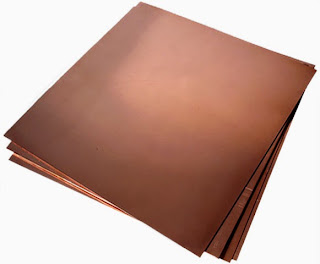When it comes to the copper market, analysts are always looking at whether there will be a surplus or a deficit. Of late, many have been calling for a continued surplus, including Thomson Reuters GFMS, which in October released an update to its 2014 copper survey, suggesting that it is unlikely the market will shift into deficit in 2015. Likewise, though the International Copper Study Group (ICSG) has revised its copper supply-usage forecast down substantially, the group is still definitely calling for a surplus.
But as with most things, there is always a flip side. Indeed, there are analysts who argue that the copper market will face a deficit sooner than many think.
Lower LME stocks
The Financial Times reported on October 28 that copper stocks at London Metal Exchange (LME) warehouses have fallen by 55 percent this year, hitting 161,050 tonnes, or about three days’ worth of global consumption.
To be fair, that figure alone does not signify a copper deficit. As Haywood Securities analyst Stefan Ioannou has pointed out, the LME may be the most transparent inventory, but it’s just one piece of the much larger copper market pie.
However, the exchange is still a valuable indicator when looking at the copper market, especially when one buyer (rumored to be London’s Red Kite Group) appears to be holding 50 to 80 percent of LME copper. In other words, it looks as if there are important players making strategic decisions to purchase copper of late, and it’s worth considering whether a prediction for a tight market is driving those decisions.
China (still) stockpiling
Furthermore, it appears that China’s State Reserves Bureau (SRB) is still stockpiling copper. After buying 200,000 tonnes of copper in March and April, when copper was at its weakest price in years, the Bureau recently placed orders for 150,000 to 200,000 tonnes of copper cathode, Reuters reported. The copper is set to be delivered in the final quarter of 2014 and at the start of 2015.
Reuters columnist Andy Home notes that its difficult to pin down exactly how much copper the SRB buys, and that the Bureau’s practice of rotating out older copper stocks could put a dent in this year’s estimated purchases of 700,000 tonnes. However, despite concerns about slowing economic growth from China, the writer suggests that SRB activity could mean the country has no intention to stop importing copper.
What well-stocked SRB warehouses might mean for the copper price is another consideration, since stockpiled copper can’t be “consumed” by industry in the traditional sense. Still, the Bureau’s buying is an important indicator of demand.
Supply delays
Furthermore, expected ramp ups at some copper mines have seen delays this year, and exports from Freeport-McMoRan Copper & Gold (NYSE:FCX) and Newmont Mining’s (NYSE:NEM) Indonesia operations were briefly stopped due to changes in concentrate export rules. While an October GFMS update points to producers regaining some of the momentum they lost in the first half of the year, the Times notes that increased mine supply has not led to a refined copper surplus. That’s due to raw material bottlenecks caused partly by the situation in Indonesia and partly by a lack of smelting capacity in China.
Rising impurities such as arsenic are also causing problems, since it’s difficult for smelters to process the material. To solve the problem, producers often blend those concentrates with purer material, creating even more demand – for the right kind of copper.
What’s next?
The ICSG has brought its prediction for a 595,000-tonne copper surplus in 2014 down to 393,000 tonnes on the back of higher apparent copper usage in China. Echoing that sentiment, the team at Thomson Reuters predicts that LME copper will average $6,500 per tonne for the fourth quarter, declining to $6,200 per tonne in 2015.
However, not all in the copper space are in agreement on that front: while Ioannou also does not see a copper deficit next year, he sees copper prices holding higher in comparison to GFMS predictions, and Andy Home has suggested that a deficit could come even sooner.
To be sure, copper investors will be keeping an eye out to see whether Home is right. Although the writer admits that his bullish thoughts “might seem premature,” he points out that others – including China’s SRB – appear to be looking at a tighter market, and that’s certainly worth taking note of.
























